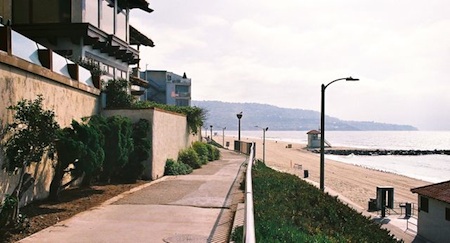Brown administration urges local preparations for climate impacts

California Governor Jerry Brown is picking up the climate baton from his predecessor, planning his first climate conference. According to officials, Brown will host the Governor’s Conference on Confronting Climate Change, currently pegged for December 15th at the California Academy of Sciences in San Francisco.
The conference is still taking shape but recent remarks from the administration seem to imply that the focus will be on planning for climate change impacts. “We have to move from planning to action…and we are behind,” says Julia Levin, Brown’s deputy secretary for climate change and energy at the California Natural Resources Agency.
“We need to be shifting toward ‘doing.’ We are not doing enough on the ground,” said Levin, adding that “Given today’s budget constraints, we need to prioritize” and “move forward on the things that make sense now.” Levin was on the climate stump in Santa Monica last week at a hearing hosted by State Senator Fran Pavley (D-Agoura Hills), who chairs the Senate’s Natural Resources and Water committee.
Levin pointed the audience to Cal-Adapt.org, a synthesis of the latest climate data from the state’s scientific community “of how climate change might affect California at the local level” (there’s a permanent link from the main Climate Watch page). She also highlighted a coming climate adaptation policy guide for local governments, a joint effort of CalPoly and the state’s emergency management agency. And there’s a Sea Level Rise task force in the works: sixteen agencies are putting together all the different science on the subject.
Former governor Arnold Schwarzenegger hosted a series of international climate “summits,” the first of which made the biggest splash. That’s when then-President-elect Barack Obama made a video appearance in which he promised aggressive climate action at the federal level. Most of that promised action has yet to materialize.
What the SRO crowd in Santa Monica heard was a call for updating the business-as-usual model of civic planning at the county and local level; the need to take the climate science on paper and put it into practice with homes and bridges, private businesses and public ports.
Out of the now-familiar science came several points for coastal stakeholders.
– Warming temps and earlier mountain snow melts will set the stage for more wildfires: we’ve seen a four percent increase since 1985, according to Tony Haymet of Scripps Institute of Oceanography.
– At the same time, we should “establish a preference for green infrastructure over [the] gray” of concrete, said Louis Blumberg, who runs California climate programs for the Nature Conservancy.
– Current development along the California coast should take account of rising sea levels, not just the standard 100-year flood, according to a list of eleven recommendations from a Pacific Institute report that co-author Matthew Heberger highlighted.
It was right on message to have the hearing in the council chambers of a city that relies heavily on coastal tourism and is bounded by mountainsides that burn with startling regularity.
